StoryWeaver Selected as Finalist for the WISE Awards 2018
Posted by Maya H on April 10, 2018We are delighted to share that Pratham Books’ StoryWeaver has been selected as a finalist for the WISE Awards 2018.
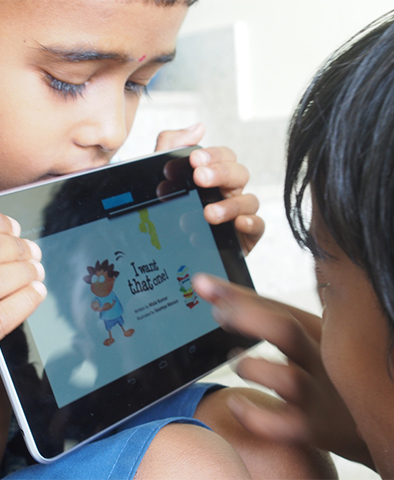
StoryWeaver, an initiative of Pratham Books, is among 12 finalists chosen by the World Innovation Summit for Education (WISE) for their innovative and impactful approaches to today’s most urgent education challenges
Each year, the WISE Awards recognize and promote innovative projects from around the world that are addressing global educational challenges.
StoryWeaver is an innovative digital platform which harnesses the power of technology, open licensing and collaboration to address the global scarcity of books for children in mother tongue languages. StoryWeaver also allows for content to be translated and versioned for localized needs. This responsive platform has published over 7500 story books available in 109 languages, making knowledge accessible to children and educators beyond global access barriers.
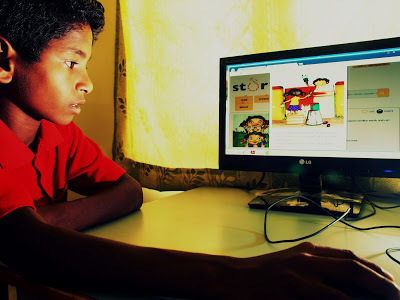
Suzanne Singh, Chairperson of Pratham Books, said StoryWeaver’svision is to massively scale the creation and distribution of reading resources for children in mother tongue languages. Our endeavor is to address the global scarcity of books for children and arm every child with the power of knowledge and opportunity. By providing access to thousands of storybooks, the platform has enabled educators to make classrooms more engaging, libraries more diverse and most importantly, make learning fun for children. With StoryWeaver, we have opened up a new pathway to nurture a generation of readers”.
Stavros N. Yiannouka, CEO of WISE, said: “We congratulate StoryWeaver for making it to the finalist stage. Each of the 2018 WISE Awards finalists has constructed an effective, tested solution to a global educational challenge. Whether it’s ensuring fundamental education for refugees or creating the next generation of empathetic and conscious leaders, each project is already transforming lives, and provides an inspirational model for others to adopt. This is vital to our mission at WISE, which centers around collaboration”.
The 12 projects come from eleven countries and were shortlisted for their innovative solutions to education challenges and their positive social impact. The awards finalists were picked from a pool of 413 projects, and evaluated according to strict criteria. They must be successful, innovative education projects that have already demonstrated a transformative impact on individuals, communities, and society. They must be financially stable, have a clear development plan and be scalable and replicable.
For further information, visit http://www.wise-qatar.org/wise- awards.
**********
About the WISE Awards:
Each year, the WISE Awards recognize and promote six successful innovative projects that are addressing global educational challenges. Since 2009, WISE has received more than 3,200 applications from over 150 countries. Up until now, 54 projects have won the WISE Awards, from a wide variety of sectors and locations for their innovative character, their positive contribution and their potential for scalability and adaptability. These projects represent a growing resource of expertise and sound educational practice. Year by year, WISE is building a community of educational innovators which offers a fertile environment for groundbreaking collaborations. Today the WISE Awards network comprises pioneering projects that are helping bring real change to societies and communities.
Be the first to comment.'What visual mischief can I indulge in?' Illustrator Kabini Amin on her illustration process
Posted by Yamini Vijayan on March 30, 2018Over the last couple of years, Kabini Amin has illustrated three wonderful books for Pratham Books. In this short e-mail interview, Pratham Books editor Zeba Imtiaz talks to Kabini about her illustration process, approach and inspiration.

Do you think there's a difference between illustrating for adults and children?
Not particularly. Over time I've come to realise that there's a child in each of our adult-sized bodies, and every child is a complete person in themselves. The more kids I meet, the more they blur these differences between 'adult' and 'children' for me. Same holds true for the adults I meet too!
I might tweak my vocabulary a bit here and there, much like when we talk to children, but I think the last thing they need is to be talked down to, and that should reflect in the pictures as well.
Having said that, what I enjoy the most about illustrating for children is the room that the genre allows for being whimsical, silly, playful, as compared to content for 'adults'. Which is sad because we all need more of those qualities in our lives!
A greater difference exists, I think, in illustrating for people of different cultural and soci-economic groups. It is here that one has to take into account visual literacy and language, and that's really what can be challenging, and interesting as an illustrator.
Your style was very varied in Dum Dum-a-Dum Biryani, Kalpana's Cycle, and Creatures of Old. How do you choose a particular style and medium for a story?
I think I mostly let the style choose me! Every time I've tried to be bullish and enter a project with a style in mind, it has ended up being a block. For me, the content and tone of the story are what first inform the style. Of course, as an illustrator, I bring in my perspective through the choices I make; do I supplement or subvert the content? What additional information can I contribute through the visuals? What visual mischief can I indulge in? And it is this kind of questioning that helps me craft a particular style for a story.
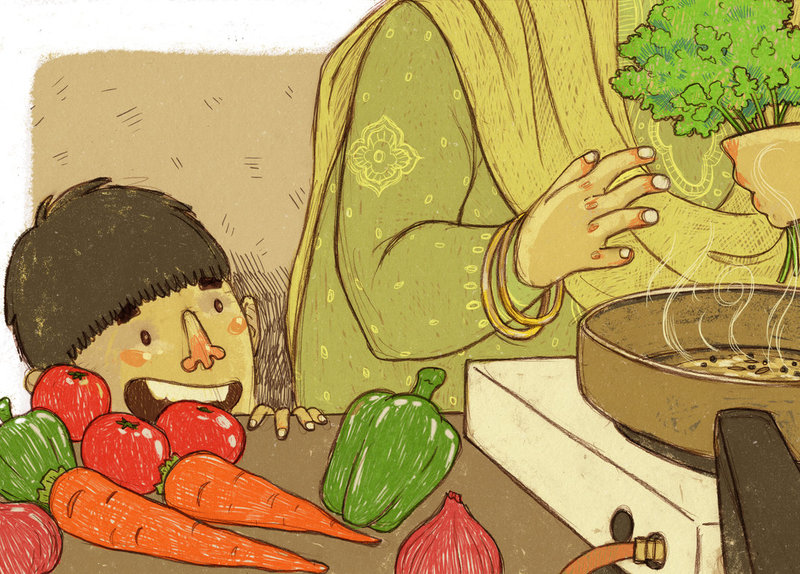
What kind of research and preparation goes into illustrating a book for children? For instance, what research went into illustrating 'Creatures of Old'?
Like I mentioned earlier, I think the preparation does depend on the kind of audience of children being addressed.
While illustrating for 'Creatures of Old', I was quite lucky to be living and working amongst biologists and herpetologists who enthusiastically shared with me books and photographs of fossils and various reptiles. I also spent some time stalking chickens.
So there was some amount of study of reptiles and birds that went into the drawings.
But, more than deep dives into anatomy and such specific research, I had a central question; how can I depict dinosaurs? I was never much of a dino nerd, even though I'm really into biology, and I never really cared for the fanged and hyper muscular depictions of dinosaurs in popular media. I wondered if I could show these animals as goofy beings, bumbling and crashing their way through primordial forests, and paleontology as a wondrous science that solves the puzzles of our biological history.
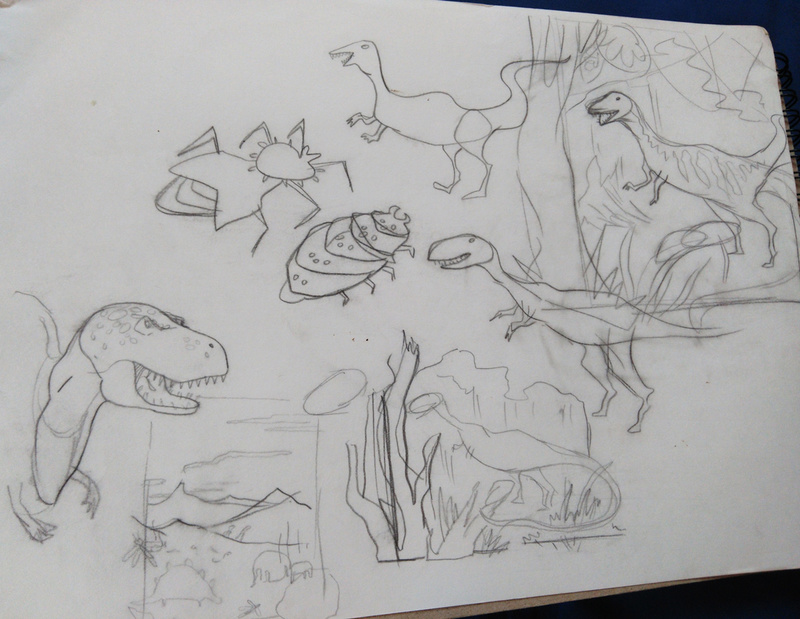
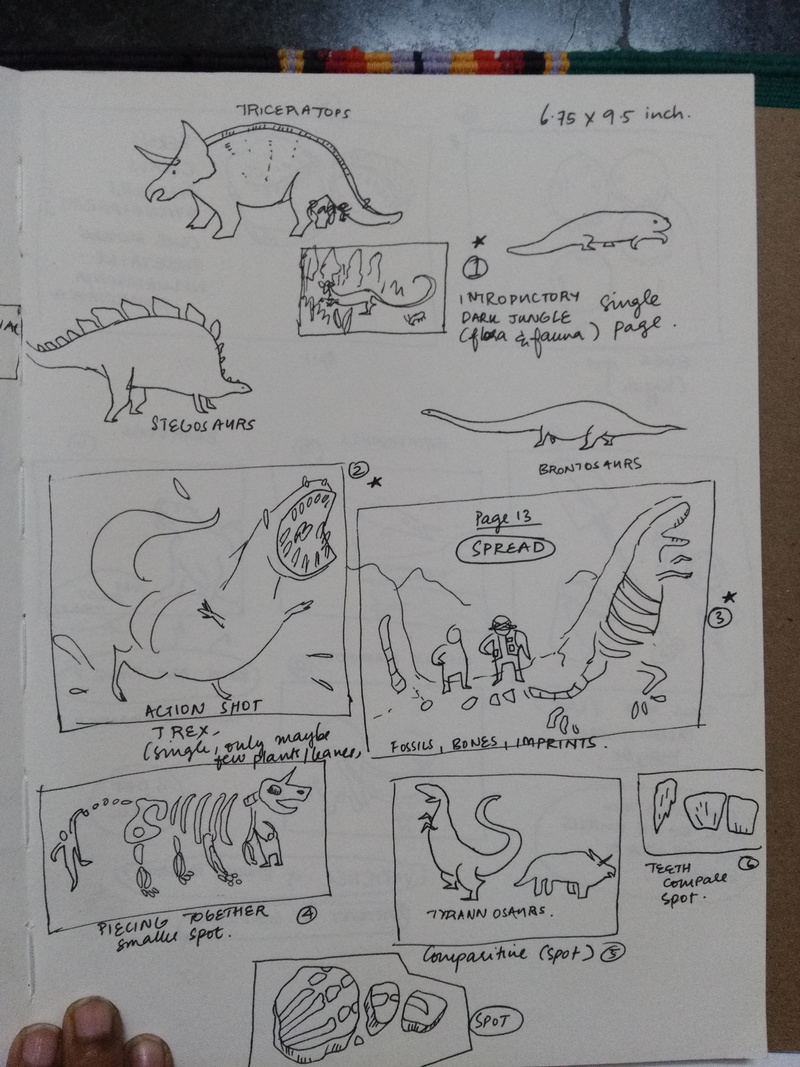
How do you find inspiration for your work?
Inspiration is everywhere, really. More often I'm fighting an overflow of ideas rather than a lack of it.
But if I am feeling dry and dusty, I try to step outside, go for a walk, or play with an animal, buy groceries, meet a friend, listen to music, make soup. Basically try to get out of my head, give myself some room to process whats going on and make creative connections.
What do you most enjoy illustrating?
That's a tricky question. I consider illustration a medium of visual communication, and as such it is the brief and context of the project that often excites me more. I'll look for what it is about the project that is interesting, and that makes whatever I have to depict interesting too!
But if you're asking me what I like to draw, then it's mostly everything. People, faces, characters, plants and their parts, animals, textures, lately I've been drawing a lot of landscapes. Everything. Except cars and airplanes, I find them to be a bore.
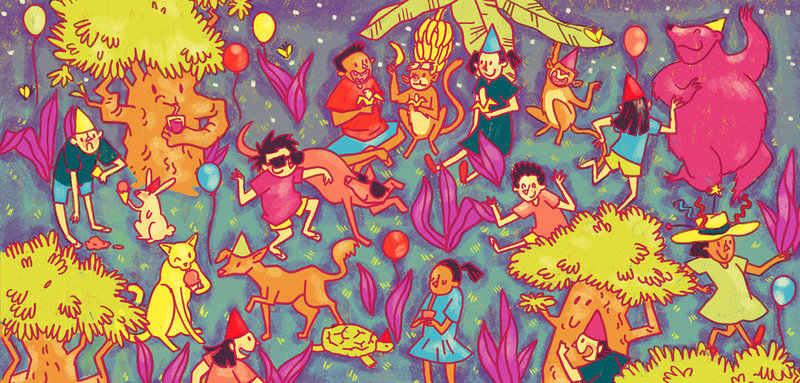
We noticed that you travel a lot. Do your travels influence your art?
Well, travel affects me as a person, and that finds articulation in my art. There are obvious things like the fact that the world, it's landscapes and people are so diverse and magical that travelling to a new place can be like a concentrated shot of sensory inspiration! There are so many new, exciting things to see on this planet! And some of these places and faces end up shaping the places and faces I have to draw. For instance, I was able to clearly visualise the landscapes in Creatures of the Old thanks to the gorgeous and harsh Death Valley desert in California that I had visited a couple of years ago.
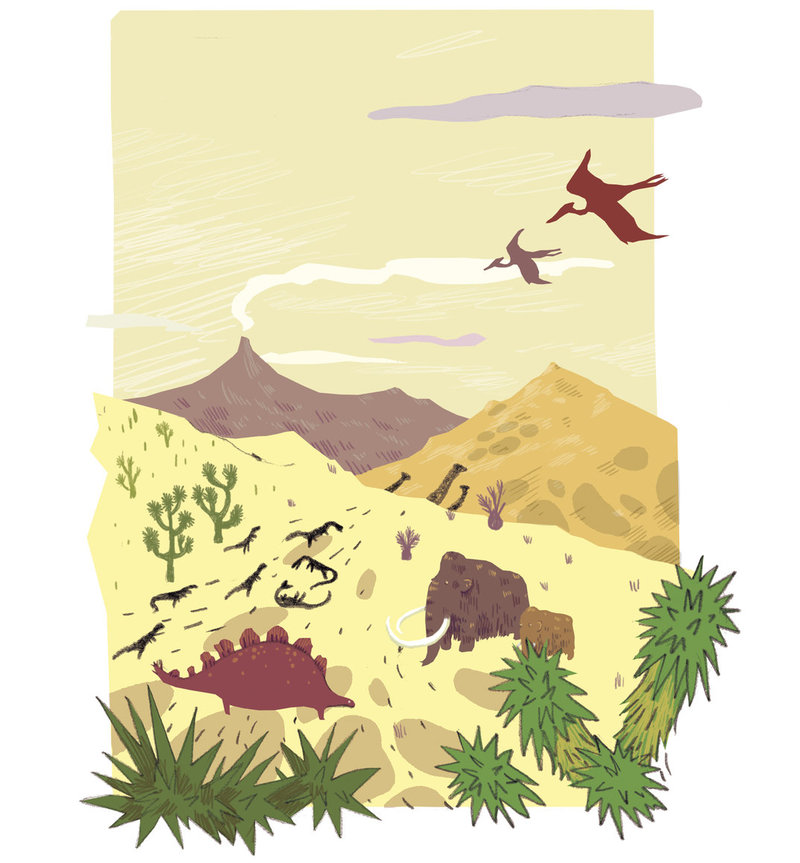
I also like travelling to understand the various ways in which we are connected, the ways in which we are all subject to the same forces of life and nature. Also to acknowledge all the ways in which we are diversely different. What I hope for, is for all this roaming around to add to my meta understanding of how this world works. And this understanding does end up tinting my work with a certain sensibility.
Kabini Amin graduated as an animator from the National Institute of Design, Ahmedabad. Fascinated by the image-making process and stories in general, she is interested in the medium of illustration as an exploration ground. When not drawing, she likes reading non fiction and undertaking gastronomic adventures. You can read her stories Creatures of Old, Kalpana's Cycle, and Dum Dum-a-Dum Biryani for free on StoryWeaver. These are available in English, Hindi, Marathi, Kannada and Tamil.
Be the first to comment.Books are the most effective means of igniting interest in language.
Posted by Remya Padmadas on March 21, 2018Our Outreach Executive Khyati Datt writes about how v-shesh is using books to help develop language skills amongst children with hearing impairments.
At a workshop conducted for parents of children with hearing impairments, Kanchan and Tabassum, trained sign language interpreters, posed the gathering question:
“What do you see as the biggest obstacle in ensuring that your child’s learning is not restricted to the classroom only?”
Most parents spoke about the communication gap that existed between them and their child which often resulted in the child becoming withdrawn from the family. Kanchan and Tabassum gave them a simple solution for this:
“Read to your children.”
Kanchan and Tabassum have always enjoyed interacting with children. They work with v-shesh Learning Services, an award winning impact enterprise that assists persons with disabilities (PwD), with socio-economic inclusion. v-shesh works in the training and education space to assist PwD in accessing formal sector jobs.
The duo are closely involved in the implementation of a project which aims to assist children with hearing impairment develop English language competency. When they joined v-shesh in 2016, the project had just started, but overtime, being in the field made them realize the needs of the children.
“Most of our students were either pre-teens or teenagers. We found a lot of interest and enthusiasm amongst the students to learn the English language, but most teaching learning material and methodologies available were not age appropriate to teach basic concepts. This led to the need for continuous innovation and to build upon existing material to make it relevant for students and simultaneously address the core challenge of assisting them with the basics”, Kanchan shares.
Books and beyond
Kanchan and Tabassum have always believed that stories are an important tool in igniting interest in learning a language. They started looking for books that were simple, colorful and had captivating illustrations. While Kanchan decided to divide the children in groups and asked them to read to each other, Tabassum started giving out books as rewards to the children.
v-shesh is a big believer of the PVR (Preview, View, and Review) method of teaching. In this method, a book is introduced to children by giving them a general description of the topic. As a next step, they read the book with the students using some visual effects and end the discussion by asking the children to review the book and share their learnings with each other. Simple videos were also made to explain the concept to the teachers and parents as well.
Children reading in pairs in a v-shesh centre in Delhi
Tabassum shares how the books from StoryWeaver were, especially, loved by children with hearing disability; “The children would often read the books on their own and volunteer to talk about the story in the class. ”
Kanchan and Tabassum’s advice to the parents at the workshop ensured that learning did not stop once the children exited the classroom. The parents of Khushi, one of the students at the center, were the first to read a book to their child. Kanchan and Tabassum noticed a remarkable change in Khushi’s confidence and were happy to see that despite not knowing sign language, Khushi’s parents were able to connect with their child through books.
Kanchan feels that, “Books are the most effective and the most important means of igniting interest in language among the students . A beautifully illustrated book helps motivate children to read and learn a language like no other”.
Source: v- shesh centre in Delhi
Be the first to comment.